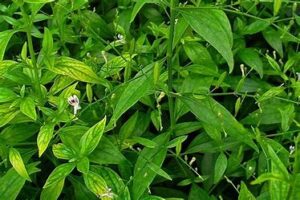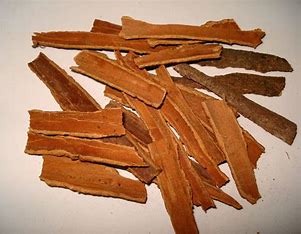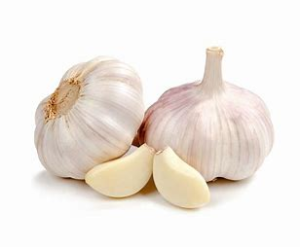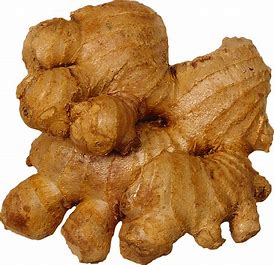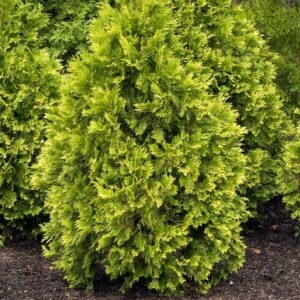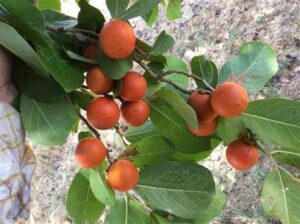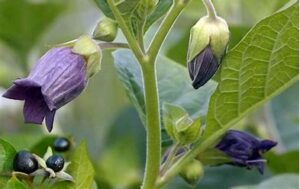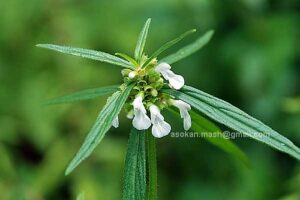Application of Homeopathy in Veterinary Practices
- Nithya Quintoil1 and A.Varun2
1Assistant Professor, RIVER, Puducherry
2Farm Manager, PGRIAS, TANUVAS, Kattupakkam
ABSTRACT
Homeopathy as a complementary and alternative medicine having a potential role to play in Veterinary medicine. So far, more than 250 studies on animals have been conducted across thereby showing plausibility of homeopathy medicines even for animals. Many homeopathic medicines have been indicated in commonly seen diseases as well as for particular diseases which are specific to animals.
Keywords: Homeopathy, Animals, ethnoveterinary practices, indigenous plants, turmeric, neem
Homeopathy is a complementary or alternative medicine which is developed in the 1790 by a German doctor Samuel Hahnemann. The principle of homeopathy treatment is that “like cures like” which means “a substance that causes certain symptoms which can also help to remove those symptoms”. Another principle is based on the process of dilution called as succussion. It is believed that when a substance is diluted, it has power to treat symptoms. Homeopathy is used to “treat” an extremely wide range of conditions, including physical as well as psychological conditions. Veterinary homeopathy is an excellent alternative for treating certain animal ailments or diseases, including conduct disorders. But it must not take the place of treatment for serious diseases. The International Association for Veterinary Homeopathy (IAVH) was formed in 1986 in Luxembourg. Department of AYUSH, Government of India and Veterinary Council of India has taken keen interest for development of Homeopathy
Many chronic and recurring diseases in animals can be successfully treated with homeopathy. The role of ethno-veterinary medicine in livestock’s is presently realized, especially in the developing countries and is also considered as a potential tool to overcome the side-effects of modern drugs and promote organic farming in both developing and developed nations. In general, Homeopathy treatment increase the immune power of the animals and also treats the disease from the root cause. Diseases like skin allergies, respiratory problems, nervous problems, epilepsy, etc. and some of acute disease like traumatic injuries and poisonings can be successfully treated. (Table 1)
Livestock is one of the fastest growing sector in agriculture and significantly contributes to the National GDPs growth. In recent years, there has been a great attention to minimize or completely avoid usage of antibiotics, as well as an increasing consumer concern for drug residues in meat, eggs and milk which leads to antimicrobial resistance and treatment failure in humans. Since, Homeopathy has been undergoing resurgence and became popular in veterinary medicine and it helps to explore beyond the limitations of conventional medicine. Generally, homeopathy treatment is practiced in various species like dogs, cats, horses, ruminants and birds.
Antimicrobial resistance (AMR) is a global problem created due to the excessive and indiscriminate use of antibiotics in human, animal and plants. About 90 per cent of the antibiotics gets unleashed into the environment, affecting the quality of water, soils, and biodiversity. AMR makes it harder to eliminate infections from the body as existing drugs become ineffective. In India, the annual rate of antibiotics use in the past five years has risen by 6-7 per cent. An Ethno veterinary remedy or Homeopathy, provides a simple cost effective and efficacious option to the small and marginal dairy farmers who can hardly afford costly conventional treatment options. This will result in significant reduction the emergence of antimicrobial resistance (AMR) which is major emerging public health concern now a day.
Table 1: Commonly prescribed medicines in commonly seen diseases in animals
| Wounds | Aconite,Arnica,Hypericum,Ledum |
| Constipation | Bryonia,Nux Vomica,Alumina |
| Cough | Aconite,Allium.Arsenic,Nat Mur,Kali Bi,Merc,Ant Tart,Drosera,Phos. |
| Diarrhoea And Vomiting | Aconite,Arsenicum,Ipecac,Phos,Puls,Nuxvomica,Veratrum. |
| Joint Pain And Arthritis | Bell,Rhus Tox,Bryonia,Silicea. |
| Skin Problems | Sulph,Arsenic, Hepar Sulph,Rhus Tox,Sepia,Kali Sulph,Graph. |
| Urinary Problems | Cantharis,Apis,Sepia,Puls. |
| Pregnancy | Arnica,Calc Phos,Caulophyllum,Calc Carb. |
| Worms | Cina |
Common homeopathy remedy used in veterinary practice:
Belladonna: Belladonna is a plant also known as Atropa belladonna. Belladonna has been used in alternative medicine as an aid in treating arthritis pain, colds or hay fever, bronchospasms caused by asthma or whooping cough etc.,
Borax: Borax, also known as sodium borate, sodium tetraborate, or disodium tetraborate, is an important boron compound, a mineral, and a salt of boric acid. It is believed that borax improves the ability of the human body to absorb calcium and magnesium Calcium levels are maximized and used effectively with the presence of boran, which prevents arthritis. Borax is commonly used in topical treatment of sores on the tongue or mouth, as well as swelling of the throat. Application of a paste made by combining borax with Cinnabaris, Borneolum and Natrii Sulfas Exsiccatus can be used for sores/ mouth ulcers.
Turmeric power: Curcumin is the main active ingredient present in turmeric, which possess a powerful anti-inflammatory and antioxidant effect. In general, a paste of turmeric power and coconut oil is use for treatment of ulcer, injury and abrasion.
Papaya seeds: Papaya seeds are rich in polyphenols, flavonoids, alkaloids, tannins and saponins. They are strong antioxidants and rich in fibre. Carpaine present in papaya seeds kills bacteria and parasites in the gut.
Dronapushpi: It is an ancient ayurvedic herb. Owing to its anti-microbial, insecticidal, larvicidal, anti-inflammatory and analgesic properties, dronapushpi is also used as an alternative medicine in treating various symptoms. Chemically bioactive components such as Laballenic acid, Β-Sitosterol, Oleanolic acid, 7-Oxostigmasterol, 7-Oxositosterol, 7-alpha Hydroxy Stigmasterol, Pillion, Gonzalitosin I, Tricin, Cosmosin, Anisofolin A, Luteolin, etc. were present in dronapushpi. Dronapushpi plays a vital role in treating various skin infections. Antioxidants present in dronapushpi is very effective in eliminating harmful free radicals from the body and its antipruritic nature alleviates the itching sensation, there by helps in skin treatment.
Thuja: Arbor vitae (Thuja occidentalis L.) is a native European tree widely used in homeopathy and evidence-based phytotherapy. It is used for treatment of wart and cancer.
Arsenic album: Arsenicum album is made by heating arsenic with distilled water, a process repeated several times over three days. It is considered to correct inflammation in body (Anti-inflammatory effects). Arsenic album is used for treating vomiting and diarrhoea which one is caused by food poising.
Nux vomica: Nux vomica is a tree and seeds are used to make medicine. It is used as appetizers in downer cow. Erectile dysfunction (ED), constipation, anxiety, migraine and many other conditions can be treated by Nux vomica.
Silica: Highly diluted solutions of silica are widely used in homeopathic medicine to treat lesions such as chronic wounds, ulcers and abscesses. It is also used for treatment of chronic mastitis as well as salicylic acid use for treatment of skin infection.
Selenium: It is used for muscular dystrophy treatment. Selenium is used as therapeutic or prophylactic measure for selenium deficiency. Selenium has been used in alternative medicine as an aid in the treatment of Hashimoto’s thyroiditis (an autoimmune disorder of the thyroid), and to treat high cholesterol.
Tart Dilution 200 CH: Tart Dilution is a useful homoeopathic remedy for the treatment of weakness and exhaustion. It helps to maintain a healthy respiratory system. It is also used for treatment of respiratory disease like pneumonia, whooping cough, bronchitis and asthma.
Ginger: Ginger (Zingiber officinale Roscoe, Zingiberaceae) is one of the most commonly consumed dietary condiments. The most important bioactive component present in ginger is gingerols and shogaols, especially [6]-gingerol and [6]-shogaol. Ginger acts as a potent antioxidant. It is used as carminative. Ginger appears to exert anti-inflammatory effects by suppressing COX-2 with subsequent inhibition of prostaglandin and leukotriene biosynthesis.
Cinnamon: In traditional medicine Cinnamon is considered a remedy for respiratory, digestive and gynaecological ailments. It is used for treatment of heart diseases. Trans-cinnamaldehyde, eugenol, and linalool were the essential oils obtained from cinnamon. It also has an anti-oxidant and free radical scavenging properties.
Garlic: Garlic is well known as a spice and herbal medicine for the prevention and treatment of a variety of diseases. It has got anti-bacterial, anti-viral, anti-fungal and anti-protozoal, anti-cancer, anti-oxidant, immunomodulatory, anti-inflammatory, hypoglycemic and cardiovascular properties. Moreover, it boosts the immune system, improves the body weight gain, improves the digestibility of ingredients, decrease the bad cholesterol and also augment the meat quality parameters.
Nilavembu: Nilavembu (Andrographis paniculata) is an erect annual herb extremely bitter in taste. It is extensively used in Ayurveda and Siddha medicines as home remedy for various diseases in Indian traditional system as well as in tribal and tamil medicine in India and some other countries for multiple clinical use. The therapeutic value of Andrographis paniculata is due to its mechanism of action by enzyme induction. It is an important clod property herb, used in fevers and to dispel toxins from the body. It is used to treat gastrointestinal tract and upper respiratory infections, fever, herpes, sore throat, hepatitis and a variety of other chronic and infectious diseases. It exhibits antibacterial, antimalarial, filaricidal, antidiarrhoeal, cardiovascular activities and protection of liver and gallbladder. The herb and its isolates namely andrographolide, neoandrograholide, dehydroandrographolide, isoandrographolide, etc. are reported to possess anti-inflammatory, hepato-protective, astringent and anti-pyretic properties and helps in arresting dysentery, cholera, diabetes, influenza, bronchitis, swellings and itches, piles, gonorrhoea etc.
Neem: Neem (Azadirachta indica) Neem is important herbal medicine having many active principle azadrachtin, nimbin, salanin, melicin, etc. Neem oil is selectively activates the cell mediated immune response by activating macrophage and lymphocytes. Apart from this have wide range of pharmacological activities
Ethno veterinary practice in India
Rich and efficient ethno veterinary traditions still exist in Indian villages. These practices not restricted to treatment of animal diseases alone, but also involves all aspects of people’s knowledge and practices in animal healthcare, productivity and performance. Ethno veterinary medicine differs from region to region and are used extensively and quite effectively for primary health care treatment and maintaining of animals productivity. Ethno veterinary practices are often cheap, safe and completely based on local resources. These can provide useful alternatives to conventional animal health care, misuses, abuses and side effects of modern drugs, shrinking financial resources, to settle in rural areas, and growing consumer interest in healthful organic-food products also provided important stimulus for emergence and recognition of a cost-effective animal healthcare option not only in developing countries, but also in the developed countries. Ethno veterinary practice is recognized as a potential resource that can play a vital role in grassroots development and poverty alleviation, empowering people by enhancing the use of their own knowledge and resources. Besides treatment of sick animals, ethno veterinary practices also includes traditional animal husbandry practices such as housing types, grazing strategies, supplementary feeding, and calf rearing. Many of these practices are still valuable for sustainable livestock development and to improve health and productivity of animals.
Medicinal plants are the most commonly used ingredients in the preparation of ethnoveterinary practices. Most parts of the plants, including leaves, bark, fruits, flowers, seeds are used in medicinal preparations. Edible earth, especially from termite and ant hills is commonly used. Herbs can be used as a good alternative therapy to costly allopathic medicines/chemotherapy and boosting immune functions in intoxicated conditions and can also effectively compliment allopathic medicine. Excessive use or exploitation of some of the wild plants is leading to the destructive harvesting and as loss of local plant diversity. Therefore, there is a need to generate awareness among the local population towards the sustainable utilization and conservation of these medicinal plants. Herbal medicines for veterinary use can be given or prepared in many simple ways: Fresh herbs are chopped and mixed with feed. Dried herbs can be administered as an infusions or decoctions by adding hot water. Alcoholic tinctures are given directly or diluted in water, and given orally carefully, Oil infusions or lotions are given externally, for example, by rubbing on sore joints Commercially available in the form of tablets or powders. Extensively used traditional treatment methods in dairy cattle are as follows:
Mastitis- Applying turmeric on udder
Tympany- Drenching linseed oil along with a mixture of ginger, turmeric and asafetida.
Retention of Placenta- Feeding bamboo leaves or a mixture of oil bran and bajra (finger millet) grain.
Diarrhoea- Drenching about 1 kg fruit pulp extract of Aeglemarmelos and mango seed kernal for 2-3 days.
Anti bacterial/ antiviral/ antiseptic :
Turmeric – (Curcuma longa) – curcuminoids
Garlic – Anti viral – Allium sativum – sulfur containing compounds alliin, ajoene, diallylpolysulfides, vinyldithiins, Sallylcysteine, and enzymes, saponins, flavonoids, and Maillard reaction products
Neem – (Azadirachta indica): Neem is important herbal medicine having different active principle azadrachtin, nimbin, salanin, melicin, etc.
Table 2 :Diseases in various animals with indicated medicines
| Names of Animals | Name of Diseases | Indicated Medicines |
| Swine | Opthalmic disease | Aconite,Euphrasia,Belladona,Arnica |
| Chancre of the ear | Arsenicum album,Hepar sulph,Mercurius vivus,Carbo veg. | |
| Mange | Sulphur,Arsenic. | |
| Cattarrh | Nux Vomica, Mercurissolubilis,Bryonia | |
| Inflammation Of Lungs | Aconite,Belladona,Bryonia,Phosphorus. | |
| Short Dry Cough With Loss Of Appetite, Strength And Spirit) | Aconite,Nux Vomica,Mercurius Vivus,Belladona,Rhus Tox,Arsenicum Album, Sulphur | |
| Colic | Aconite,Arsenicum Album,Nux Vomica | |
| Diarrhoea | Arsenic,Chamomilla,Mercurius Solubilis. | |
| Rheumatism | Aconite,Bryonia,Rhus Tox,Sulphur. | |
| Inflammation of lungs | Aconite,Arsenic,Belladona,Hepar sulph,Spongia | |
| Inflammation of stomach | Aconite,Arsenic,Pulsatilla,Ipecacuhana | |
| Constipation | Nux vomica,Bryonia,Cocaine | |
| Diseases of udder | Aconite,Belladona | |
| Saint Anthony’s fire | Aconite,Belladona | |
| Horse | Mallanders and sellanders (scurfy eruptions occurring at forepart of the hock or back of knee) | Thuja |
| Farcy (oedematous swelling of the legs) | Aconite,Arsenic,China,Rhus tox,Thuja | |
| Grease (scurfy eruptions on the heels) | Thuja,Secale cor,Arsenic,Mercurius vivus | |
| Waters (excrescence, frequently appeared around the lips and eyes) | Thuja,Arsenic,Calc carb,Causticum | |
| Fatigue | Arnica,Cannabis,Nux vomica | |
| Founder (rheumatic inflammation of bones,muscles,ligaments and tendons) | Aconite,Bryonia,Veratrum album,Arsenic,Sulphur | |
| Hide bound(derangement of digestive organs) | Arsenic,Ant crud,Mercurius vivus,Sulphur | |
| Thrush | Tincture sulphuris,Phosphoric acid,Squilla,Arsenic | |
| Migraines (disease caused by undue pressure of the blood) | Aconite,Arnica,Opium,Belladona,Sulphur | |
| Colic or gripes | Aconite,Arsenic,Nux vomica,Chamomilla,Cantharis,Hyoscyamus,Colocynth | |
| Worms | Cina,Sulphur,Mercurius | |
| Inflammation of kidneys | Aconite,Arnica,Dulcamara,Cantharis,Mercurius vivus | |
| Retention of urine | Lycopodium,Hyoscyamus,Cannabis indica | |
| Abortion | Sabina,Secale cor,Pulsatilla,Arnica,China,Rhus tox | |
| Ox | Skin diseases | Sulphur,Mercurius vivus,Arsenic,Thuja |
| Rheumatism | Aconite,Bryonia,Belladona,Arsenic,Sulphur | |
| Opthalmia | Arnica,Aconite,Eupharasia,Conium | |
| Warts | Thuja,Calc carb, Arsenic | |
| Swelling of head | Aconite,Belladona | |
| Acute indigestion | Colchicum,Arsenic | |
| Loss of appetite | Arsenic,Nux vomica,Pulsatilla | |
| Diseases of urinary organs | Cantharis,Camphora,Nux vomica,Belladona,Pulsatilla | |
| Satyriasis | Cantharis,Pulsatilla,Phosphorus | |
| Sheep | chancres or black mouth | Nitric acid,Sulphur |
| Hoven or blown (flatulence caused by overeating) | Arsenic,Colchicum,Nux vomica | |
| Dropsy | Arsenic. | |
| Apoplexy caused by over-feeding | Belladona,Aconite, Nux vomica, Pulsatilla | |
| Core consists of the formation of an excrescence in the gullet or Alvine passage. | Arsenicum, Mercurius, Silicea | |
| Pip dryness of the tongue due to clogging of the nostrils | Spongia,Mercurius vivus | |
| White comb vegetable parasite or fungus, which attacks fowls | Sulphur,Staphysagria | |
| Feathering | Calcarea Carb., Chamomilla Or Hepar Sulph. | |
| Gapes gasping of breath | Drosera, Dulcamara, Ignatia, Lachesis, China. | |
Conclusion:
Homeopathy is defined as a medical art that brings about cure through the administration of a medicine which is minute in dose and given according to similarity, by lifting the disease without pain or debilitation. Homeopathy medicine is eco-friendly. Since ancient times, herbs, minerals has been mentioned in several ayurvedic scriptures as an ultimate remedy for numerous health anomalies. Imbued with powerful analgesic, anti-inflammatory, anti-bacterial properties, it improves immunity. The people of remote area can use this medicine where allopathy medicine is not available. Homeopathy or ethno veterinary or plant based treatment for animals is an important weapon to tackle the growing Antimicrobial resistance in the global scenario.
References:
- KODLADY N, Patgiri BJ. Utilization of borax in the pharmaceutico-therapeutics of ayurveda in INDIA. Indian Journal of History of Science, 2012:47(2); 191-209.
- Emerging Role of Homeopathy in Animal Husbandry: An Overview by veterinary doctors | Homeopathy Resource by Homeobook.com [Internet]. Homeobook.com. 2018 [cited 13 May 2018];Available from: https://www.homeobook.com/emerging-role-of-homeopathy-in-animal-husbandry-an-overview-by-veterinary-doctors/
- Emerging Role of Homeopathy in Animal Husbandry: An Overview by veterinary doctors | Homeopathy Resource by Homeobook.com [Internet]. Homeobook.com. 2018 [cited 13 May 2018];Available from: https://www.homeobook.com/emerging-role-of-homeopathy-in-animal-husbandry-an-overview-by-veterinary-doctors/
Pictures of the commonly used indigenous medicinal herbs:
https://www.pashudhanpraharee.com/application-of-homeopathy-in-veterinary-practice-2/



